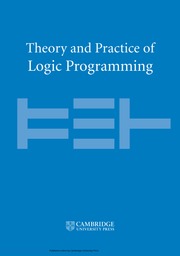No CrossRef data available.
Article contents
Locksynth: Deriving Synchronization Code for Concurrent Data Structures with ASP
Published online by Cambridge University Press: 01 September 2023
Abstract
We present Locksynth, a tool that automatically derives synchronization needed for destructive updates to concurrent data structures that involve a constant number of shared heap memory write operations. Locksynth serves as the implementation of our prior work on deriving abstract synchronization code. Designing concurrent data structures involves inferring correct synchronization code starting with a prior understanding of the sequential data structure’s operations. Further, an understanding of shared memory model and the synchronization primitives is also required. The reasoning involved transforming a sequential data structure into its concurrent version can be performed using Answer Set Programming, and we mechanized our approach in previous work. The reasoning involves deduction and abduction that can be succinctly modeled in ASP. We assume that the abstract sequential code of the data structure’s operations is provided, alongside axioms that describe concurrent behavior. This information is used to automatically derive concurrent code for that data structure, such as dictionary operations for linked lists and binary search trees that involve a constant number of destructive update operations. We also are able to infer the correct set of locks (but not code synthesis) for external height-balanced binary search trees that involve left/right tree rotations. Locksynth performs the analyses required to infer correct sets of locks and as a final step, also derives the C++ synchronization code for the synthesized data structures. We also provide a performance analysis of the C++ code synthesized by Locksynth with the hand-crafted versions available from the Synchrobench microbenchmark suite. To the best of our knowledge, our tool is the first to employ ASP as a backend reasoner to perform concurrent data structure synthesis.
Information
- Type
- Original Article
- Information
- Theory and Practice of Logic Programming , Volume 23 , Issue 4: 2023 International Conference on Logic Programming , July 2023 , pp. 812 - 831
- Copyright
- © The Author(s), 2023. Published by Cambridge University Press


